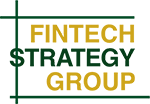Blockchain once promised to solve the world’s ills. My deep dive while building fintech startup TangoTrade found that it’s still not quite ready for prime time.
When I left Payoneer to found TangoTrade back in early 2018, my initial vision was driven by two key observations. First, that small and medium sized businesses engaging in global trade were being poorly served by banks and their traditional Letter of Credit product, and were facing high costs, complexity and risks as a result. Second, that blockchain, and in particular ‘smart contracts’ enabled by blockchain technology, appeared to be an ideal foundational technology to enable an unprecedented level of security and transparency to reduce the risk and complexity often inhibiting global trade. In retrospect, I believe the first observation still holds true. The second, not so much.
At the time, blockchain and distributed ledger technology (DLT) were hot commodities providing the technology underpinning bitcoin and other crypto currencies. With initial coin offerings (ICOs) by blockchain startups seemingly announced every other day, a massive $6.3B was raised by ICOs in the first 3 months of 2018 alone. I had a front row seat to this craziness, as a former colleague from PayPal raised over $26M in a token sale / ICO for their planned Libra Credit crypto token (now known as Cred) in May 2018. Even banks were starting to experiment with blockchain, with a range of bank-sponsored initiatives intended to revolutionize trade finance with blockchain, such as We.Trade, Voltron and Marco Polo.
So, I set to work building my expertise. It seemed like there was a blockchain related conference every other week. I selected several of the more legitimate looking events in Silicon Valley and dove in. Not too surprisingly, many of the “featured speakers” were making the rounds at multiple events. Over the next couple of months, I heard the same over-hyped stories from high profile bitcoin and blockchain evangelists such as Tim Draper and Vinny Lingham multiple times. The variety of blockchain initiatives on display was astounding. One of the most memorable, and not for the right reasons, was a wacky project called CryptoPicture, which was a 1,000 pixel by 1,000 pixel online image where businesses and individuals could purchase individual pixels (represented by a block on the blockchain) to publicize themselves, aiming to create a “billion-dollar picture”. I’m pretty sure they fell quite short of that goal.
I also engaged with the major platforms at the time to dig into the details – R3 / Corda, Consensys / Ethereum, IBM / Hyperledger, and JP Morgan / Quorum. They seemed eager to work with a startup like TangoTrade that was focused on applying blockchain technology to a real world challenge. I read at least 20 ‘white papers’ from other startups building products using blockchain tech. Some, like Filecoin and Binance, had well thought out business models and a clear vision on how they planned to build their technology. Others, like 300cubits (“Blockchain for Shipping”) and XCHNG (“Revolutionizing digital advertising”) were long on aspiration and very short on detail.
I learned the buzzwords, and developed a strong grasp on the tech: permissioned vs permissionless blockchains, smart contract oracles, DApps, token ecosystems, you name it. It was all fascinating and exciting. But the deeper I dug, the clearer it became that the technology was still not quite fully baked.
When it came time to start building the TangoTrade solution in the summer of 2018, we ultimately decided not to leverage any blockchain technology. Why? Three key reasons. One, there were still very few, if any, successful examples of companies using blockchain to solve real world challenges (outside of crypto currencies). The few high profile blockchain companies were still primarily focused on crypto currencies or building an infrastructure layer, rather than applying the technology to end-user facing applications. With TangoTrade, we were already facing business model risks in launching a new service, and I felt it was unwise to layer on additional technology risks associated with such a new, and still largely unproven technology.
Secondly, as we engaged more with our target segment of small and medium sized businesses, we found that the concept of blockchain came with unwanted baggage. We got questions like “Isn’t that for bitcoin?” and “Isn’t bitcoin used mostly for shady transactions?”. Rather than blockchain being perceived as a beneficial element of our platform, it proved to be a cause for concern among many of our technologically unsophisticated prospective users. Not good.
Finally, we encountered a significant shift in the early stage investment community. Far from the hot commodity that blockchain was in 2017 and early 2018, by the summer of 2018 venture investors had soured considerably on blockchain startups. I distinctly remember pitching a VC focused on early stage fintech startups (our ideal type of investor) who stopped my presentation on the third slide to let us know that, although he found the market opportunity interesting, the blockchain component was a nonstarter for him. Other potential investors were less direct, but had similar feedback. By the summer, we had removed the blockchain element from our pitch, and were successful in raising our seed round.
So, in the end, am I still excited about the technology? Yes, but with some caveats. There are some real world use cases where blockchain and distributed ledger technology can provide unique value, such as decentralized identity management (see IBM’s initiative) and tracking supply chains for commodities like diamonds (see Everledger). However, the explosion of startups applying blockchain to every business challenge under the sun proved to be too much too early. Unfortunately blockchain will not be the revolutionary technology it was once hyped up to be, but it will have an enduring impact in certain limited segments where the value of immutable ledgers and transparency can unlock novel opportunities.

